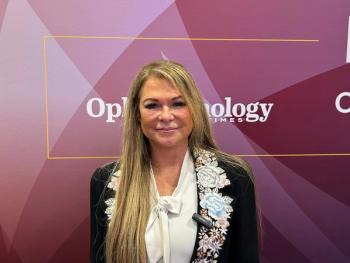
Biometry, IOL power formulae improve outcomes
Accuracy of IOL power calculation can be significantly increased through the use of a low-coherence laser interferometry device (Lenstar LS900, Haag-Streit) for optical biometry combined with a last-generation, four-variable, "paraxial" ray-tracing formula (Olsen formula; PhacoOptics software, IOL Innovations). The benefit is due to improved prediction of postoperative IOL position, said Thomas Olsen, MD.
Aarhus, Denmark-Accuracy of IOL power calculation can be significantly increased through the use of a low-coherence laser interferometry device (Lenstar LS900, Haag-Streit) for optical biometry combined with a last-generation, four-variable, “paraxial” ray-tracing formula (Olsen formula; PhacoOptics software, IOL Innovations). The benefit is due to improved prediction of postoperative IOL position, said Thomas Olsen, MD.
“There is no argument that use of optical biometry to determine axial length has addressed one of the major sources of error in IOL power calculation because of its greater accuracy compared with ultrasound. As a result, however, prediction of anterior chamber depth (postoperative ACD) has become the predominant variable and the new limiting factor affecting the accuracy of IOL power calculation,” said Dr. Olsen, assistant professor of ophthalmology, University of Aarhus, Denmark.
“Unlike previously available optical biometry instrumentation, the Lenstar LS900 accurately measures preoperative ACD and lens thickness. Using these data in the multiple-variable IOL power calculation formula, the final position of the IOL can be predicted with high precision,” he said. “With this approach, we can stop talking about the ‘estimated lens position,’ which usually is back-calculated using a simple thin-lens formula, and achieve more accurate postoperative refractive outcomes.”
Dr. Olsen demonstrated the benefit of using his multiple-variable IOL power calculation formula (Olsen formula) with data on ACD, axial length, lens thickness, and keratometry obtained from Lenstar LS900 measurements for improving the accuracy of IOL power calculation in a study that included 959 eyes.
The patients had undergone routine cataract or refractive lens exchange surgery, and they all received one of two IOLs that are similar in design, either a spheric monofocal (SA60AT, AcrySof, Alcon) or spheric toric monofocal (SA60Tx, AcrySof Toric, Alcon). Results from final refraction were compared with values predicted by the multiple-variable Olsen formula and using conventional formulae that include just one or two variables, including the SRK/T, Holladay I, Hoffer Q, SRK I, and SRK II. All calculations were done using a lens constant optimized for each formula.
Mean absolute power prediction error using the Olsen formula was 0.41 D, and that value was significantly lower than the result obtained using any of the other formulae. The Hoffer Q formula had the next best performance with a mean absolute prediction error of 0.45 D followed by the Holladay I and SRK/T (mean absolute prediction error = 0.45 D for both). Mean absolute prediction errors using the SRK II and SRK I formulae were 0.57 D and 0.67 D, respectively.
“Although the SRK I and SRK II formulae were included in the study for comparative purposes, they are outdated and should not be used in clinical practice because of their poor accuracy,” commented Dr. Olsen.
Results with the eyes stratified based on axial length showed the Olsen formula performed consistently well in short, normal, and long eyes, having a lower bias with axial length compared with the conventional formulae. The greatest benefits of the Olsen formula for improving power prediction accuracy compared with the other formulae were especially noted in the very short and very long eyes.
In a study performed several years ago [J Cataract Refract Surg. 2006;32:419-424], Dr. Olsen established that the predictability of postoperative lens position was significantly improved with a formula that included data on preoperative ACD and crystalline lens thickness in addition to keratometry and axial length. Using data from 860 eyes, he demonstrated the accuracy of the multiple-variable formula for predicting postoperative ACD. Linear regression analysis showed a very high correlation (r = 0.89) between the predicted and actual ACD values as measured using the Lenstar LS900. The predicted value was ±0.5 mm of the actual value in 99% of eyes.
“To my knowledge, this is the highest correlation ever reported for actual versus predicted ACD,” Dr. Olsen said.
He added that personalization of the “fudge factors” used in IOL power calculation, i.e., the surgeon factor and the A-constant, as a strategy to improve prediction of the estimated lens position helps to reduce the mean error in the overall population, but the range of error remains wide.
“Remember that the A-constant is not a constant,” he said.
Dr. Olsen is a shareholder in IOL Innovations.
For more articles in this issue of Ophthalmology Times eReport,
Newsletter
Don’t miss out—get Ophthalmology Times updates on the latest clinical advancements and expert interviews, straight to your inbox.



















































.png)


